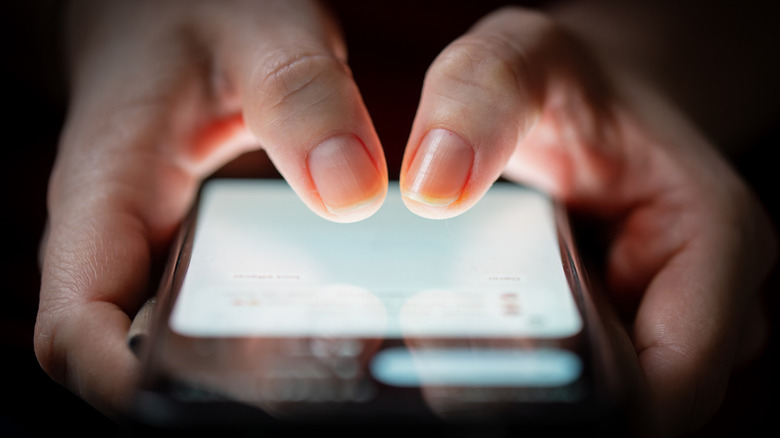What Is End-To-End Encryption And How Does It Work?
In the digital age, protecting data has become paramount. Even everyday people have a critical need for protecting their information, and one way that's done is end-to-end encryption, often abbreviated as E2EE. This commonly refers to SMS messages, with each sender and recipient of the texts being one end in the "end-to-end" part of the term. It means that only you and the person you're sending a text to can decrypt and see it, preventing even your service provider from accessing the data.
The information in the text is scrambled and unreadable by anyone who intercepts it. As soon as the text is sent, it's encrypted, and it's not decrypted (or unscrambled) until it gets to the recipient's device. And even then, only the sender and recipient can read what was sent. Visualize a power cable. One end plugs into the wall and the other end into a device. You can't plug anything into the center of the cable to successfully receive power. It's the same with E2EE; the data being sent is unreadable by application servers, internet service providers (ISPs), and even hackers. Even a messaging service provider like WhatsApp can't read your messages.
While the process of typing up a text and sending it is a simple one — receiving even easier — there's a lot happening behind the metaphorical curtain of the software. Read on to get a better understanding of how E2EE protocols work.
E2EE protocols go through multiple steps to ensure security
The idea of end-to-end encryption doesn't involve much. Yes, the technical side of it — creating the encryption — is complex, but the general process is only a few steps. The first stage of E2EE is the encryption process. Any data being sent will first be scrambled into an unreadable format known as cyphertext, using either an asymmetric or symmetric key. The latter uses a single key for both encryption and decryption of the data, while the former uses two different keys. Only the person with the decryption key can read this data, which is the intended recipient of the message. The next stage is the ciphertext data being sent across an electronic signal.
Once the ciphertext reaches its destination, it's decrypted automatically. But that's not where the process ends, because even after it's been decrypted, the integrity of the data needs to be authorized. This authorization ensures that nobody has tampered with the data and that it's still exactly the message that was sent by the original sender. In fact, it's incredibly difficult for anyone to tamper with a message once it's been scrambled. If somebody makes a change to the original message it will render it invalid, ensuring the recipient isn't receiving faulty data.
Do some research before trusting messenger apps if security is a priority. The E2EE protocol an app uses can mean all the difference. For example, Telegram uses an iffy protocol and doesn't enable E2EE by default, making it arguably less secure than some alternatives.
SMS messages aren't the only place E2EE is used
Meta rolled out E2EE for its Messenger app in December 2023, while WhatsApp has protected its messages since 2014. If you're looking for other messenger apps with strong E2EE protocols in 2024, there are plenty of options, like Signal. However, SMS messages aren't the only form of data that can benefit from E2EE. There are various password management services that use E2EE, but unlike SMS messages, there's nobody to send the data to. Instead, E2EE keeps the password data protected when the user is syncing between devices.
Storage devices can also offer some E2EE protection, keeping the data stored scrambled until the user accesses it with the decryption key. Sure, your personal device at home might not be on any hacker's radar, but what about cloud storage? Some cloud storage services often provide E2EE for its users that will keep the data secure. And just like with SMS messages, the E2EE protocol should prevent the service provider from viewing the data.
If you've ever gone through an onboarding process virtually, filling out forms for your new place of business, it's likely that the company was using an E2EE protected peer-to-peer service. File sharing can deal with sensitive material that you don't want intercepted, such as tax forms and legal documents. So if security is your priority, look for services that offer end-to-end encryption protocols and do your research so you know they're solid.


